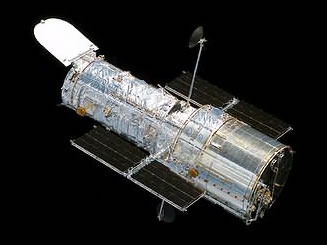A team of astronomers have successfully looked back about 13 billion years to pinpoint one of the first galaxies to exist after the Big Bang.
Writing in Nature, University of Paris Diderot-based researcher  Matt Lehnert and his colleagues explain how they have used the European Southern Observatory's VLT (Very Large Telescope) in Chile to focus on a patch of the sky called the Hubble Ultra Deep Field that contains a galaxy, initially spotted by the Hubble telescope, called UDFy-38135539.
Matt Lehnert and his colleagues explain how they have used the European Southern Observatory's VLT (Very Large Telescope) in Chile to focus on a patch of the sky called the Hubble Ultra Deep Field that contains a galaxy, initially spotted by the Hubble telescope, called UDFy-38135539.
The team used an instrument on the VLT called SINFONI to study the galaxy in detail. Specifically, they were looking at how "stretched out" the light arriving from the galaxy is; this is a phenomenon called red-shifting and is the cosmic equivalent of the siren pitch-drop produced by a passing ambulance.
The team's measurements revealed a red-shift of z=8.6, indicating that the light they were seeing had been travelling across the Universe for about 13 billion years to reach us, making this one of the earliest galaxies in existence following the Big Bang, which occurred about 13.7 billion years ago.
Further analysis on the spectrum of light arriving from UDFy-38135539 has also enabled the team to estimate that the galaxy was rapidly spawning stars at the rate of up to 4 million per year and, from comparisons with other similar closer galaxies, the new-born stars would have contained very little in the way of metals.
Why this discovery is so important is that it helps to define the time limit around an early event called "the epoch of reionisation". Put simply, shortly after the Big Bang, when things cooled sufficiently for protons and electrons to combine together, the early Universe was shrouded in a dense fog of hydrogen. But as soon as the first stars began to shine, the ultraviolet they were pumping out ripped apart the hydrogen again, rendering the Universe once-more transparent.
The results from the present study not only tell us when this must have happened - because the light could not have reached us unless the hydrogen smog had lifted - but they also inform our understanding of the structure of the early galaxy and its neighbours which would have to have blown away the hydrogen fog so the light can be seen...
- Previous Vegetables with your Mammoth Steak Sir?
- Next TB Supervaccine










Comments
Add a comment